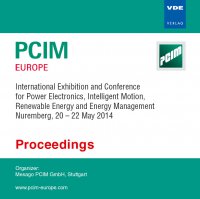Efficiency and lifetime of an active power filter with SiC-MOSFETs for aerospace application
Konferenz: PCIM Europe 2014 - International Exhibition and Conference for Power Electronics, Intelligent Motion, Renewable Energy and Energy Management
20.05.2014 - 22.05.2014 in Nürnberg, Deutschland
Tagungsband: PCIM Europe 2014
Seiten: 9Sprache: EnglischTyp: PDF
Persönliche VDE-Mitglieder erhalten auf diesen Artikel 10% Rabatt
Autoren:
Liebig, Sebastian (Liebherr Elektronik GmbH, Germany)
Lutz, Josef (TU Chemnitz, Germany)
Inhalt:
The intentions of the More Electrical Aircraft (MEA) concept are weight reduction and higher efficiency. The main topic here is the application of electrical systems instead of conventional hydraulical, pneumatical and mechanical systems. Besides the substitution of conventional systems, the optimization of the electrical systems regarding power density and efficiency has become increasingly important. The state-of-the-art electrical supply in aircrafts is a 115 V three-phase system with variable frequency from 360 to 800 Hz. New airplanes such as the B787 from Boeing or the A350 from Airbus have a 230 V three-phase supply. Conventionally, power electronic devices use autotransformer rectifier units and active front-ends to generate the DC-link voltage. An interesting alternative is the B6 rectifier together with a parallel active power filter (APF), which compensates for the 5th and 7th harmonics. Due to the parallel arrangement, the power density is higher compared to transformer or active front-end. Furthermore, one APF is capable of compensating for the harmonics of several devices. This paper investigates the overall efficiency of an NPT-IGBT - respectively SiC-MOSFET - based power stage and estimates the lifetime of power modules taking into account the mission profile and number of active / passive cycles.


